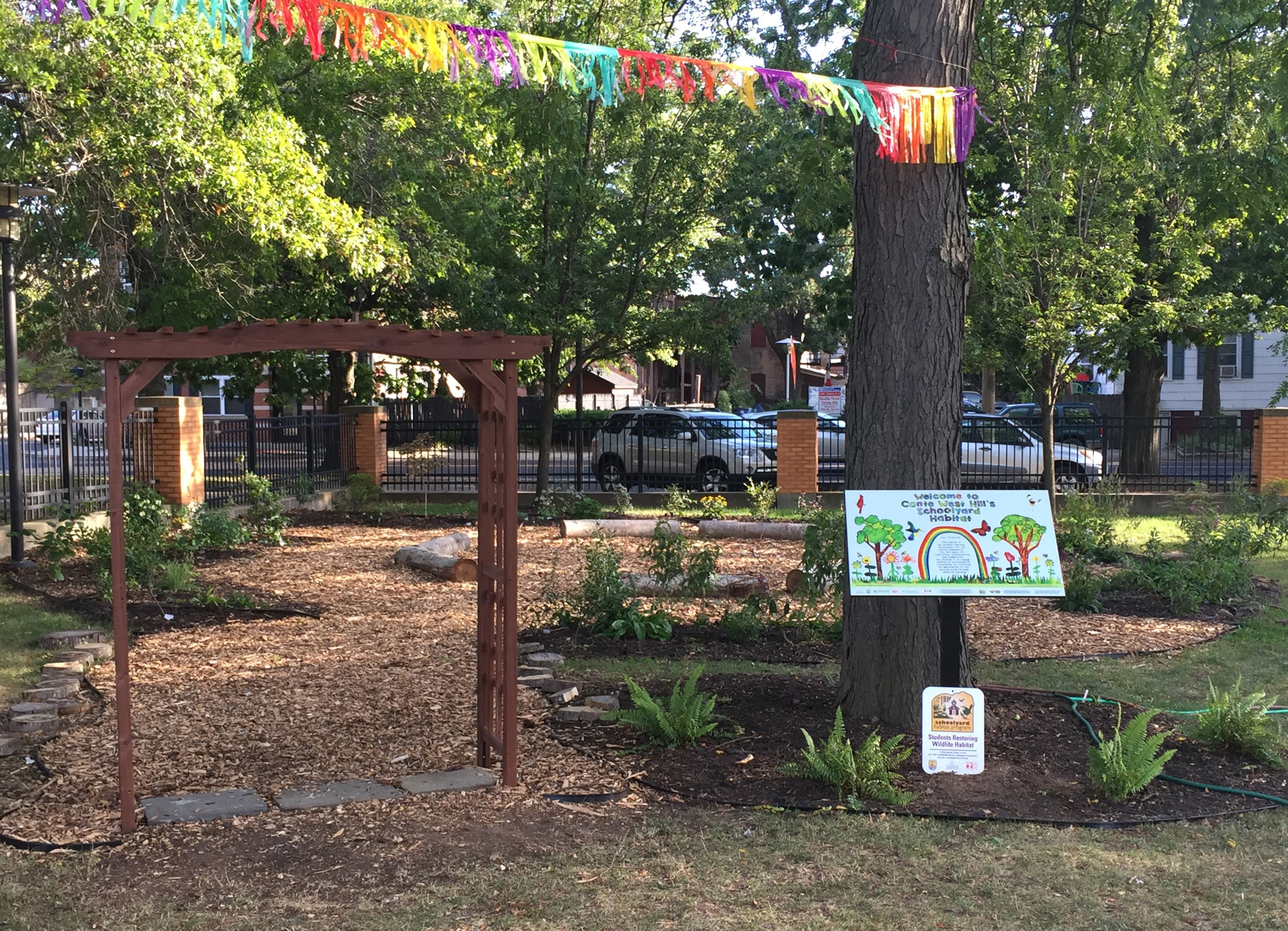
Against a backdrop of native plants, students and teachers at Conte West Hills Magnet School are learning about nature outside the classroom.
The pre-kindergarten to eighth grade school located on Chapel St., secured a $3,000 grant last year from the nonprofit organization Audubon Connecticut and the public agency Common Ground High School to create a “schoolyard habitat,” a space that incorporates plants that thrived before the rise of human settlements.
The garden, which is designed to promote learning about the environment, opened last Wednesday after being under construction since April. It features over 100 plants, 95 percent of which are native, and tree trunk-based benches where students and teachers can gather for intellectual, social and emotional improvement.
“They have an opportunity to connect with nature right in their schoolyard,” Katherine Blake, the bird-friendly community manager at Audubon Connecticut, said. “And for students living in urban areas, this is really important.”
The U.S. Fish and Wildlife Service funded the grant, which will help introduce children to migratory birds, pollinators, such as bees, and plants going through their life cycles, Blake said.
With the help of Audubon Connecticut and Common Ground, Conte West teachers are also trying to incorporate the habitats into their lesson plans for traditional subjects like math and art.
During the planning process, eight teachers determined the habitat’s location, size and design. One of the committee members, art instructor Carole Anderson, designed the habitat. Cathy Roy and Julie Peterman, other teachers at Conte West, honed their green thumbs to select plants at the nursery Earth Tones, which specializes in native Connecticut greenery.
Parents and Elm City community members also donated time and resources, including wooden logs, to make the schoolyard habitat a reality.
Though the habitat’s foundation is finished, only 70 percent of the project is completed, as there are more plants and outdoor furnishings to come, Anderson said. The grant secured last year from the School Habitat Program — the coalition between Audubon Connecticut and Common Ground -— will partially fund the new additions. But Peterman hopes that the habitat can secure more donations to provide the best space for the students, she said. In the coming years, Conte West hopes to add beehives nearby, a small pond for birds, work spaces for students and more plants.
This spring, the graduating eighth grade class donated a birdbath to its habitat.
The Conte West project is the latest in a growing regional trend to create more wildlife spaces in schools, Blake said. In Connecticut, 16 New Haven and Fairfield County Schools have created these habitats and the numbers will continue to rise as eight grants are up for competition.
The Schoolyard Habitat Program will host the Schoolyard Habitat Leadership Summit on Oct. 25 at the Audubon Greenwich Center.







